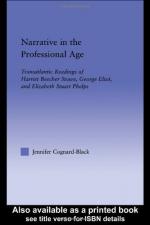|
This section contains 3,243 words (approx. 11 pages at 300 words per page) |

|
SOURCE: “‘I Am Half-Sick of Shadows’: Elizabeth Stuart Phelps's Ladies of Shalott,” in Legacy: A Journal of Women Writers, Vol. 14, No. 2, 1997, pp. 123-28.
In the following essay, Gehrman examines Phelps's interpretation of the myth of the Lady of Shalott and its embodiment of Victorian womanhood.
The Lady of Shalott was a central icon of the nineteenth century, enjoying a level of popularity among artists and poets similar to the fame of the Roman Catholic madonna throughout the Italian Renaissance. In 1832 Alfred Lord Tennyson drew upon the mythology of the Age of Chivalry and Arthurian Legend to create in his poem, “The Lady of Shalott,” the appealing masculine fantasy of the imprisoned damsel languishing for the love of the noble knight.1 Shortly after its publication, Pre-Raphaelite artists found themselves inexorably drawn to Tennyson's poem and added to the Lady's popularity by creating dozens of pictorial representations of her plight...
|
This section contains 3,243 words (approx. 11 pages at 300 words per page) |

|


